The Ancient Riddle That Stumped an Emperor
When Emperor Taizong of Tang faced Wei Zheng’s legendary brain teaser, he spent three sleepless nights wrestling with what seemed impossible. This is that challenge: the Besieged City puzzle. It isn’t just another wooden toy—it’s a masterpiece of ancient engineering that embodies the profound truth that “great perfection appears flawed, yet its use is inexhaustible.” This deceptively simple wooden cage holds secrets that have challenged brilliant minds for over a millennium, a legacy of genius passed down through history. No brute force, no tools—just pure intellect and the wisdom to see beyond the obvious. Are you ready to test your wits against imperial intelligence?
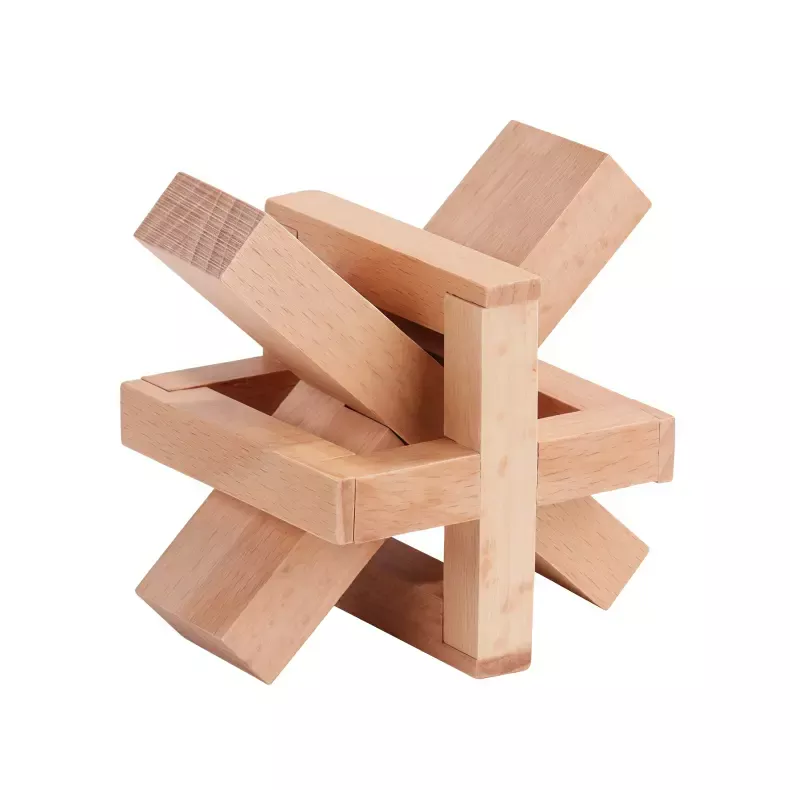
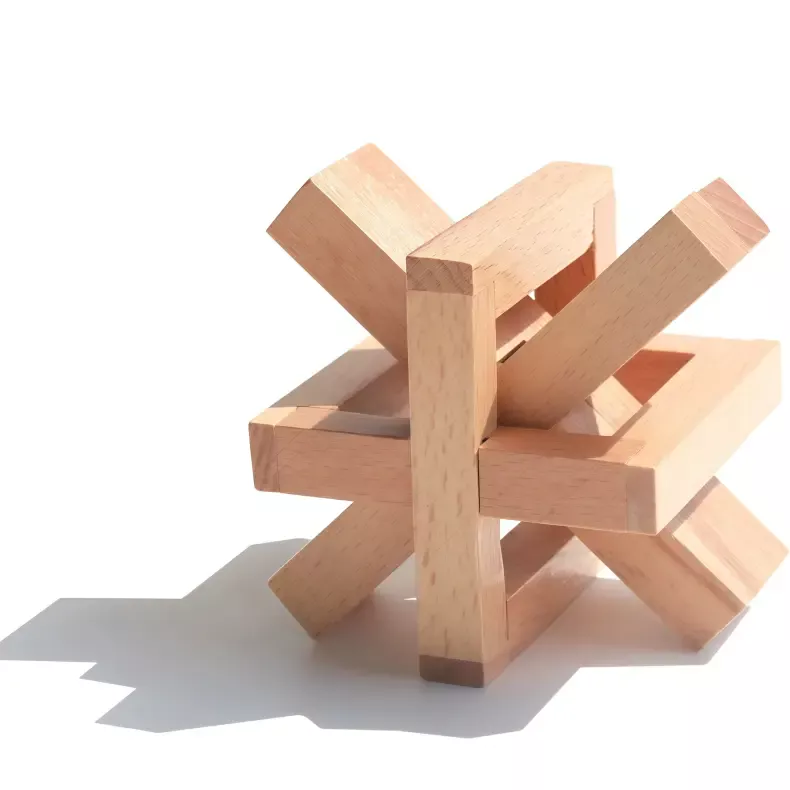
Master the Art of Centrifugal Wisdom
The Besieged City puzzle operates on elegant mechanical principles that would make Leonardo da Vinci proud. Feel the premium wood as you examine the central rod; inside lie two precisely crafted pins that create the perfect trap. Tilt it left or right, and each pin jams securely into its corresponding hole, locking the rod in place. The breakthrough comes not from force, but from understanding motion: place the puzzle flat, give it a controlled spin, and watch as centrifugal force pulls both pins back simultaneously. The rod slides out with a satisfying click, revealing the ingenious internal mechanism. Reassembly is a dance of precision, using the same spin to lock it back up. It’s pure mechanical poetry.
Where Ancient Philosophy Meets Modern Problem-Solving
Like Archimedes discovering leverage, solving the Besieged City puzzle teaches us that “great skill appears clumsy.” The Tang dynasty engineers understood what modern neuroscience confirms: our greatest breakthroughs come from shifting perspective, not applying more force. This puzzle embodies the Taoist principle that “stillness can overcome heat; tranquility can set the world right.” When Emperor Taizong finally saw the solution, he had an “aha moment”—the sudden clarity that comes when we stop fighting a problem and start dancing with it. Every spin of this ancient puzzle reveals timeless wisdom about patience, observation, and the power of indirect action.
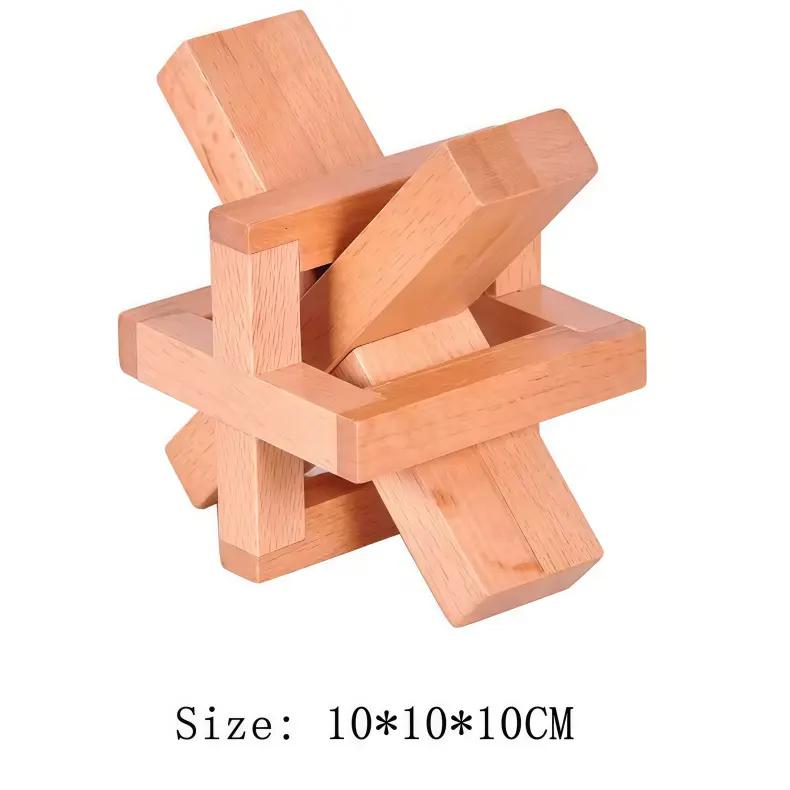
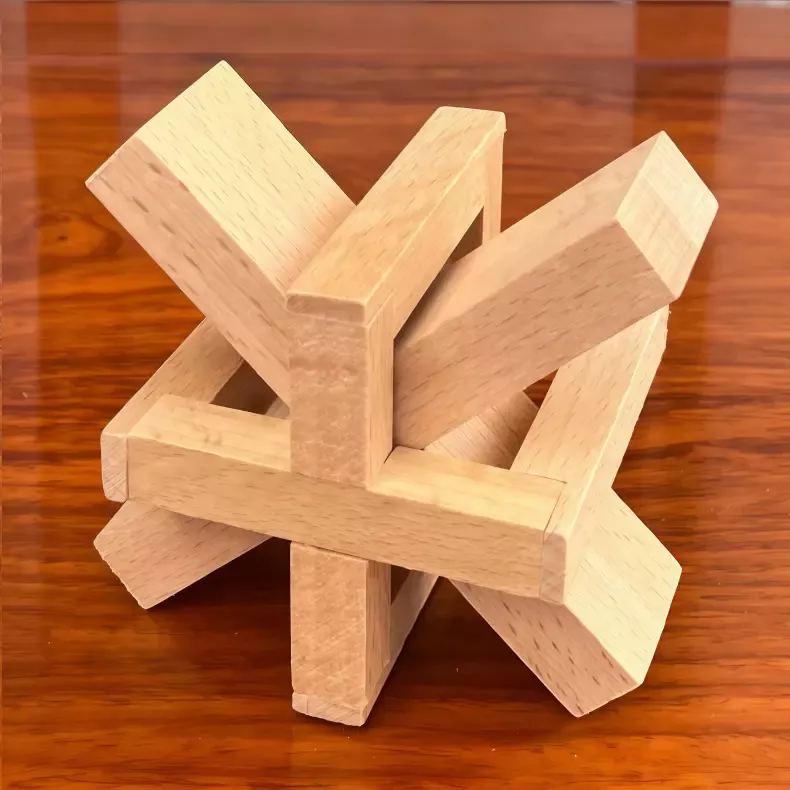
Own Your Piece of Imperial History Today
The Besieged City puzzle is more than entertainment—it’s a conversation starter, a meditation tool, and a bridge between ancient wisdom and modern minds. Crafted from premium wood with a precision-engineered mechanism, it offers endless hours of satisfaction. Whether for the puzzle enthusiast in your life or your own collection of intellectual challenges, this piece delivers both beauty and mental stimulation. Limited quantities are available, each with historical context. Transform your coffee table into a portal to Tang dynasty brilliance. Add the Besieged City puzzle to your cart now and join the ranks of history’s greatest puzzle solvers.

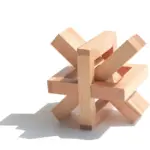
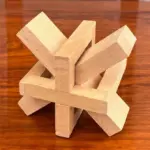
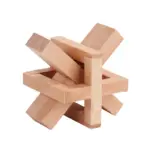
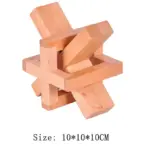
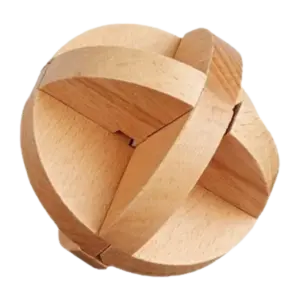
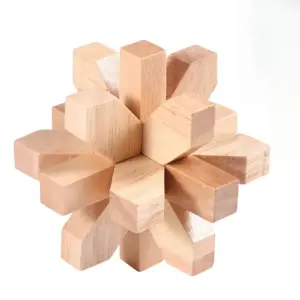
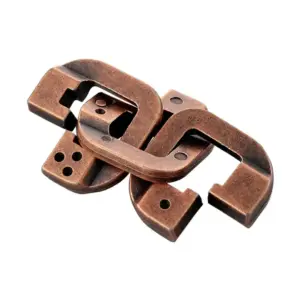
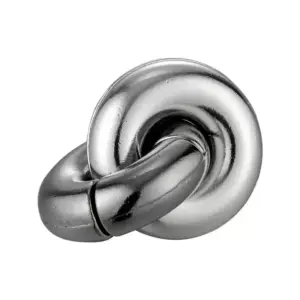
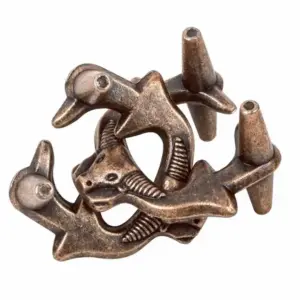
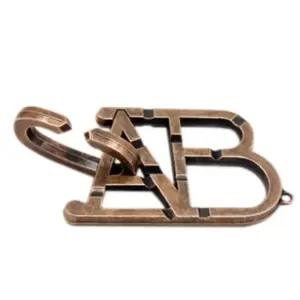
Alex –
I bought the Besieged City puzzle on a whim and it surprised me. The wood feels nicely finished, not cheap, and the mechanism inside is clever without being fragile. It took me longer than I expected to figure out the spin trick, which felt rewarding rather than gimmicky. The challenge is gentle enough for a casual afternoon but deep enough to keep you thinking for multiple sessions. Great for a coffee table conversation piece.
Morgan –
I gifted this to a friend who collects unique brainteasers and they were delighted. The packaging was compact and protected the pieces well, and assembly felt satisfying. The design leans vintage in a good way; it looks like something with a story. Playing it together made for laughs and head-scratching moments. It isn’t an all-night obsession puzzle, but it delivers that neat ‘aha’ feeling and the tactile click when things slide is oddly soothing.
Jamie –
This puzzle sits on my desk and does double duty as decor and a fiddly problem to break concentration — in a good way. The wood grain gives it a warm look, and the mechanism feels precise. I like that brute force is useless; it teaches you to think differently. It’s challenging enough to frustrate you briefly but satisfying when solved. If you like small mechanical puzzles with character, this one deserves a spot on your shelf.
Taylor –
I appreciate clever design and this puzzle delivers that. The instructions were minimal, which I liked; figuring it out was part of the fun. The spin trick is simple yet elegant, and the interior pins snap back in a way that demonstrates good tolerances in manufacturing. My one nitpick is size — I wish it were slightly larger for easier handling, but that’s personal. Solid build, thoughtful mechanism, and a pleasant way to noodle for twenty minutes.
Sam –
Bought this as a thoughtful stocking stuffer and it landed perfectly. My partner and I spent a rainy evening passing it back and forth, offering wild theories before someone finally tried the spin. The puzzle encourages collaboration and patient experimentation. Finish and fit are excellent; no splinters, and the moving parts glide smoothly. Also, the little mental break it offers between work calls is priceless. Highly recommend for couples or small groups who enjoy low-stakes puzzling.
Chris –
I’m a bit critical about craftsmanship, and this mostly passed muster. The wood is pleasant but I found a tiny rough edge that needed a light sand; nothing major. Mechanically the concept is brilliant — centrifugal motion as a solution is unexpected and elegant. Difficulty sits comfortably for intermediate puzzlers: not trivial, not infuriating. If you want something purely decorative, look elsewhere, but if you enjoy a hands-on riddle that rewards patience, this is a good buy.
Pat –
This was my first historical-style mechanical puzzle and it hooked me. There’s a satisfying ritual to placing the rod, giving it a spin, and feeling the mechanism release. The puzzle combines history and engineering cleverly — it feels like holding a tiny artifact. Replayability is decent: after solving I still enjoy disassembling and reassembling it to show friends. Packaging was tasteful with a short note about the origin, which I appreciated. Lovely little heirloom potential.
Jordan –
I gave this to my sibling who loves fidgety objects and they immediately took to it. The tactile feedback is better than I expected; parts move with a reassuring precision. The solution isn’t obvious, so it creates a nice micro-challenge without being destructive. Two complaints: it’s slightly pricey for what it is, and the finish could be glossier for presentation. Still, it’s an enjoyable desk toy and a clever example of mechanical thinking that sparks conversation.
Casey –
As someone who enjoys mechanical puzzles, I liked how this one teaches approach over force. The spin technique is counterintuitive and clever, and I appreciated the historical nod. It’s not excessively difficult, so it’s accessible for a broad audience, which is perfect for party demos. The construction is solid and the parts show attention to detail. It won’t replace a serious collector’s puzzle shelf, but it’s a delightful, well-executed piece that earns a lot of smiles.
Riley –
Nice little brainteaser that’s great for decompressing after work. The mechanism is surprisingly refined and the wood finish feels pleasant in the hand. I solved it during a commute (off the train, of course) and enjoyed the tactile rhythm of trying different motions. It’s an elegant physical reminder that some problems need perspective rather than force. My only suggestion would be a brief printed hint tucked in the box to spare absolute beginners from immediate frustration.
Avery –
This puzzle has personality. My teenage nephew and I spent an afternoon arguing over possible solutions until one of us tried spinning it on a whim. That small moment of discovery was brilliant — the sort of shared victory that sticks. It’s sturdy enough to survive handling by less delicate hands, and the pieces don’t feel flimsy. If you’re looking for a casual challenge that’s fun to pass around at family gatherings, this is a winner.
Blake –
I’m always hunting for conversational objects for my living room and this hit the mark. It looks like an antique and invites curiosity; guests inevitably pick it up and try to solve it. The mechanism is elegant and the motion-based solution is a clever twist on classic locking puzzles. It’s also small enough to tuck into a drawer if you want to hide your victory stash. Price is fair for the craftsmanship. Definitely a memorable piece.
Drew –
I like puzzles that teach you something subtle and this one does. The idea that a spin can free a trapped rod is a neat physics lesson disguised as a toy. The tactile satisfaction of the internal pins releasing is oddly calming. A couple of times the moving parts felt a touch stiff but that eased after a few uses. Not a museum-grade artifact, but a well-made, thoughtful puzzle that rewards curious hands and patient minds.
Quinn –
Charming puzzle with a smart mechanism and a compact footprint. I use it as a mental warm-up before creative work — five minutes of fiddling primes my brain for lateral thinking. The materials feel premium for the price bracket and the tolerances are tight enough to be satisfying. It also travels well; I’ve taken it on flights and it survives in my bag. Great for gifting to friends who like tactile challenges or historical curiosities.
Parker –
I enjoyed the cleverness and the old-world vibe. The puzzle leans into indirect problem solving which I find refreshing. It’s not hyper-challenging but offers repeated small satisfactions, and the craftsmanship is decent. The only real downside is that one edge of the base had a tiny blemish out of the box; I sanded it lightly and it’s fine now. Overall, a cute, well-designed brainteaser that makes an excellent minimalist gift.
Skylar –
Bought for my partner who loves antiques and mechanical toys; we both enjoyed it more than expected. The mechanism is elegantly simple once revealed and the two-pin system inside is a clever piece of engineering. Manipulating it feels meditative and the sound when it clicks free is oddly satisfying. Packaging was neat and included a short blurb about the historical background which added to the charm. Good balance of aesthetics and function.
Reese –
This puzzle is a tactile lesson in patience and observation. The initial frustration gives way to a sweet ‘aha’ moment that feels earned. It’s sturdy and survives being passed around by friends who aren’t careful, which is a plus. The size is compact enough to fit in a drawer but sturdy enough to sit on a table without sliding. If you want a low-key, elegant brainteaser that invites show-and-tell, this is a great find.
Devon –
I admire the concept and the execution but had higher expectations for finish consistency. The mechanism works beautifully and demonstrates smart design, yet one of the slats had a slight paint inconsistency that bothered my eye. That said, solving it is a delight and the mechanical lesson about motion over force is surprisingly satisfying. If manufacturing QC were crisp, this would be flawless; as-is it’s still a charming and clever puzzle worth buying.
Rowan –
This is the kind of object that turns casual visitors into mini-competitions. People pick it up, try to brute force it, and then learn a gentler trick. It’s a wonderful demonstration of problem solving and it sparks conversation about historical cleverness. The woodwork is pleasant and the locking action is reliable. Not the hardest puzzle in the world, but perfectly tuned for social puzzling and demo-worthy reveals. Highly recommend for coffee table showoffs.
Harper –
I love that this puzzle emphasizes method over muscle. The solution using centrifugal motion is delightfully counterintuitive and educational. Craftsmanship is good; the pins slide smoothly and the fit is precise. It’s also durable enough to handle repeated fiddling without loosening. My only slight gripe is the lack of a small instruction card for those who want a hint without spoiling the trick entirely. Still, it’s beautifully made and fun to share with friends.
Nolan –
This was a budget-friendly introduction to mechanical puzzles for me and it exceeded expectations. The materials feel solid, not flimsy, and the internal mechanism is clever and robust. Solving it felt like cracking a tiny mechanical code, and reassembling it was enjoyable too. It’s a great bridge between decorative objects and serious brainteasers. If you want something portable, handsome, and genuinely puzzling without being infuriating, go for it.
Isla –
I tend to nitpick design details and this mostly impressed me. The internal mechanism feels precise and the spin-release idea is elegant. I did notice the finish had a faint glue mark near one joint, which I could rub away, but I expect higher polish at this price. Still, the experience of solving is excellent and the puzzle has become a favorite fidget on my desk. It strikes a nice balance between historical flair and functional play.
Felix –
I’m into small mechanical objects and this one is satisfying. The reveal is delightful and the pins retract in a very clever synchronized way. It’s portable, aesthetically pleasing, and encourages a different way of thinking about how to approach a locked object. Great for demonstrating the value of observation and gentle experimentation. It’s become a favorite in my puzzle rotation for quick warm-ups and social demos at gatherings.
Priya –
This puzzle is a fun classroom prop for a weekend workshop I hosted. It helps illustrate simple physics and the idea of indirect problem solving in an engaging way. The students loved handling it and the ‘lightbulb’ moment when someone figured out to spin it was priceless. Build quality is solid and it handled repeated demonstrations without issue. For educators or anyone who enjoys a tangible example to spark curiosity, this is a neat tool.
Mateo –
Well-made and intellectually satisfying, though not without quirks. The spin-release mechanism is brilliant but I found that repeated rough handling caused a slight loosening after a while; a drop of wax fixed it. It’s not a flaw for careful users but worth noting for heavy fidgeters. I appreciate the historical nod and the compact size which makes it easy to gift. Overall a charming, well-conceived puzzle with enduring appeal.
Nora –
I bought this with the hope of finding a tactile desk distraction and it delivered. The finish feels premium and the internal engineering is surprisingly clever for such a small object. It encourages calm tinkering and rewards patient exploration. Pretty durable, too — no loose bits after a few weeks of constant handling. A neat purchase for anyone who likes mechanical oddities that double as conversation starters. The only downside is it disappears into my pile of other gadgets quickly.
Liam –
This was more fun than I expected. The mechanism uses motion in a way I hadn’t considered before and the satisfying release is a small triumph. Size and weight are compact and comfortable to handle. Packaging was neat and the piece looks classy on a shelf. The puzzle is accessible for newcomers but still charming enough for hobbyists to enjoy. If you want a small, tactile puzzle with character that’s easy to share, this fits the bill.